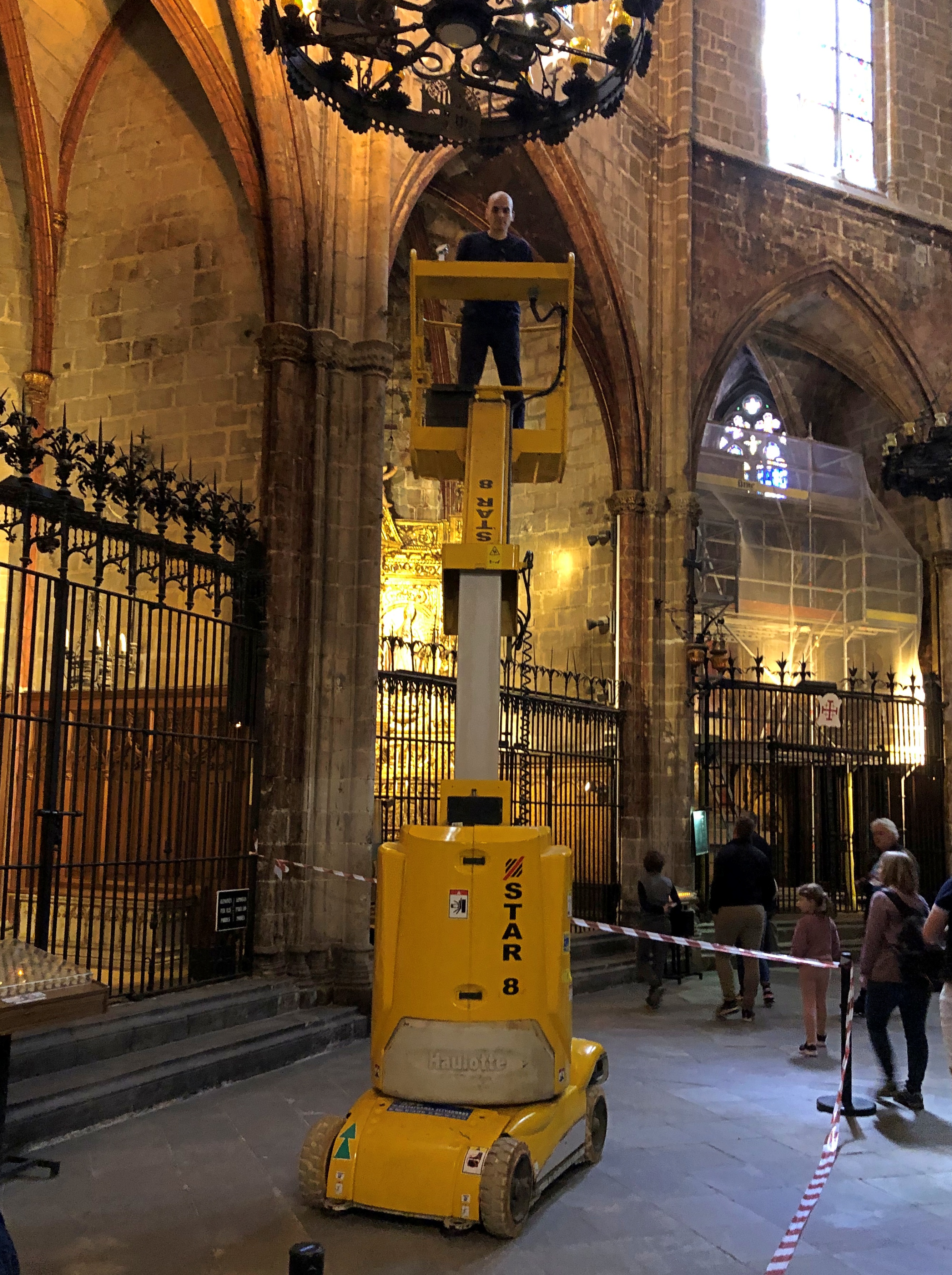We were up and out early on our last day in Dublin, which was capped by downing Guinnesses, and we flew out that evening for a somewhat late arrival around midnight at El Prat Airport, Barcelona. Our energy reserves were low, riding one of the yellow-and-black cabs – the only legal colors – along the highway, looking out to indistinct nighttime streetscapes.
Some blocks from our hotel, we left the highway and crossed into the district known as Eixample, literally Expansion. That’s what it was, for late 19th-century Barcelona. The neighborhood features a regular street grid with buildings on all four sides of every block, a mix of residential and retail, with some offices as well.
We perked right up. At taxi speed, and at the midnight hour, details are fuzzy. The big signs and the bright lights and scattering of pedestrians on the sidewalks stood out. We passed a small grocery, brightly lit. A cafe. A small restaurant. A number of closed businesses, either for the night or for good. Another small grocery, just as bright. A closed bakery. A closed boutique with small lights illuminating mannikins. A bar with a few patrons out on tables on the sidewalk. A restaurant with a takeout business. Another grocery store.
What do you know, Catalonians were working on that whole walkability thing all the way back in the 19th century, especially one Ildefons Cerdà, the pioneering urban planner who designed neighborhood.
The next morning, May 18, we were fairly eager to take to the streets of Eixample, and wider Barcelona, and walk, and figure out the subways. By mid-morning found ourselves in the Barri Gòtic, the city’s oldest neighborhood. Put another way, the original location of the city, with many streets owing their origins to Roman thoroughfares, and many buildings owing their origins to a 14th- and 15th-century flowering of prosperity in the up-and-down history of Barcelona.
You can’t wander through the Barri Gòtic without encountering Barcelona Cathedral from one direction or another. We approached from the back.

Formally, the Cathedral of the Holy Cross and Saint Eulalia. A Christian site since the 4th century at least, and site of a Roman temple before that. Completed in 1420 after more than a century under construction.



In the crypt beneath the high altar is alabaster sarcophagus of St. Eulalia, patroness of the cathedral and co-patroness of Barcelona. Martyred in the early 4th century, according to tradition.
The cathedral naturally counts as Gothic, but Gothic Revival as well. The Gothic-style exterior was a 19th- and early 20th-century addition, replacing a spare exterior that was the style for Catalan churches when the cathedral was originally built.
Part of the admission (€9) included a ride in a small elevator to a landing and a small metal staircase leading to a short series of walkways on the roof of the cathedral.

Thus included in the admission are expansive views of Barcelona.



Ordinary visitors don’t exit by at the place they came in, but rather through a door that leads to a cloister ringed with chapels that are behind iron bars, as they are in the cathedral itself.

The chapel next to the gift shop. They were on their way to visit St. Rita, patroness of abused and battered women.
I don’t remember which chapel this plaque fronted. It was the only memorial I saw in Barcelona to civil war dead, though I didn’t go out of my way looking for them. In this case clerics.
Not the only momento mori around. Burials in the floor. 

A reminder of mortality before you step out of the cathedral grounds into the city streets. In case you needed one.





